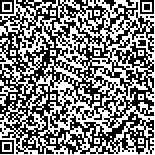下载中心
优秀审稿专家
优秀论文
相关链接
摘要

高分辨率数据中云高度的差异性突显,特别是边缘处高度在云阴影识别和地表辐射估算等方面成为需要考虑的重要因素。热红外数据获取云高度分辨率较低、缺乏细部差异性特征,为解决这一问题,首先将对应的热红外和可见光数据进行特征点配准,再将基于热红外数据计算的云高度重采样至高分辨率,然后以基于欧式距离变换的围线搜索方法及距离加权将热红外云边缘高度匹配至对应的可见光图像,最后根据云阴影的相似度匹配方法确定真实云高度。结果表明,算法在遵循热红外云高信息分布变化规律的同时,可以得到较准确的高分辨率云边缘高度,一定程度上解决了热红外技术获取云高在分辨率上的局限,扩展了其在云高反演方面的作用。
Differences in cloud height are obvious in high-resolution data, especially because cloud edge heights have become an important factor in cloud shadow identification and estimation of surface solar radiation. However, the resolution of cloud heights calculated by thermal infrared data is low and lacks detailed characteristics. Cloud edges of visible and thermal infrared bands differ considerably both in shape and geometric features. The edge of high-resolution image has rich characteristics, whereas that of thermal infrared cloud height data is single and fuzzy in geometric characteristics, so they cannot match exactly. Although some feature points of clouds can be obtained by some feature point matching methods such as Scale-Invariant Feature Transform (SIFT) and Harris, the difference between two data on geometric features made available by feature points was less. This result cannot satisfy the need to match the information of thermal infrared cloud heights and high-resolution cloud edge data, and obtain a result with abundant diversity. To solve this problem, an algorithm was presented in this study.
First, SIFT algorithm was utilized in this method to extract feature points for further image registration and correction. Then, cloud edge heights were calculated by thermal infrared data and re-sampled to a high resolution. Next, Euclidean distance transform was performed for each cloud edge pixel of high-resolution data to all thermal infrared cloud edge pixels, which could obtain spatial relationships between the two types of data. As the two types of data differed considerably in edge characteristics, directly determining the optimal matching point was difficult. Thus, a hierarchical searching method was used here. While the searched objects had different significance to matching points, the weight was given by distance to determine the final matching height. Finally, real cloud heights were determined according to the matching method of cloud shadow similarity.
We used five images of HJ-1B CCD and IRS data in the Heihe area on June 8, 2012. From all the matched results, the corresponding regions of the matched results had high cloud heights where thermal infrared data also had high cloud heights. At the same time, resolution and details were improved. To evaluate the accuracy of the calculated heights, we selected 10 highly recognizable feature shadow points in each image and marked their coordinates in the image. We set the actual shadow points as reference and calculated the offset of the same feature shadow point, in which we could obtain the error of each cloud height. We found that the errors between 0.1 km to 0.3 km were 70% among all 50 points, 12% were less than 0.1 km, and 0.25 km was the average error of all points. Compared with other studies, cloud height accuracy was higher in our study. Also, we chose SIFT algorithm to match cloud heights by using two types of data and compared the matched results of some feature points with our method. The height accuracy obtained by SIFT was lower than that of our algorithm. In addition, unlike some feature point matching methods, our method can complete full-information matching.
A cloud edge height matching method based on Euclidean distance transform by hierarchical searching is proposed in our paper. The method can match the cloud height information of low-resolution thermal infrared to corresponding cloud edge of high-resolution image. Experimental results showed that the matched results followed the distribution and variation law of thermal infrared cloud heights, as well as the cloud edge heights with high accuracy and detailed characteristics. To a certain extent, our study solved the resolution problem in obtaining cloud height by thermal infrared data. In addition, compared with some matching methods of feature points, our method could complete full-information matching and had a higher accuracy. However, the accuracy of matched results would be influenced by many factors, such as accuracy of cloud detection, surface in homogeneity, and image registration. The method in our paper is only for cloud edge height. Thus, matching for other parts of cloud still needs further research.

